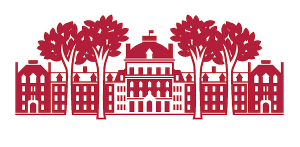Demuth helps readers understand the consequences of viewing non-human entities as commodities and of trying to force nature to conform to human concepts of time. Her discussion of whales, walruses, and reindeer demonstrate how ideas of human exceptionalism and domination over nature create an unsustainable relationship between humans and non-humans. In ignoring these more-than-human frameworks, humans promote the idea that we can force nature to accommodate our wants and needs in the timeframe that we choose, but in reality, beings in nature have their own knowledge and concepts of time that don’t always align with our own. The main example of this in The Floating Coast is how excessive whaling eventually became unsustainable because cycles of birth and death in whale populations did not align with socialist and capitalist expectations of linear growth. Demuth offers the perspective of the Indigenous people on the Bering Strait to demonstrate how adopting a more-than-human framework can promote a more sustainable relationship with nature. She discusses how they viewed whales as “offering” themselves over to be killed, which ultimately shaped their hunting practices and the ways in which they defined what a whale is. Overall, this approach fostered a greater amount of empathy for non-human entities that was severely lacking amongst socialist and capitalist whalers. Thus, the potential of more-than-human frameworks offers the possibility of a future without human exceptionalism - a future where we value our relationships with animals and don’t treat them purely as commodities. It also suggests the development of a kind of negotiation between humans and non-humans similar to Callon’s actor-network theory of inter-species translation. In this article, he talks about how the researchers “negotiated” with the scallops to figure out the right conditions for them to anchor - a negotiation that was both beneficial for the researchers (because it advanced their understanding of how to promote the growth of scallop populations) and to the scallops (because it could potentially increase their chances of survival). This kind of negotiation is something we could adopt in our everyday relationships with non-humans to promote relationships based on empathy and reciprocity. An example that comes to mind is Anishinaabe black ash basket weaving. In a class I took last semester, we learned about the Anishinaabe practice of creating black ash baskets, from cutting down the tree to weaving to decorating. Before the basket weavers cut down a tree, they ask the tree permission to be killed. If the tree does not give the basket weaver permission, they move on to another tree. This is similar to how the Indigenous people on the Bering Strait only killed whales that they believed were “offering” themselves up to die. The Anishabee basket weaver’s relationship with the black ash trees is also reciprocal, because the trees provide the weavers with resources to make their baskets, and in turn, the weavers cut down trees which clears the forest canopy above. This allows more light to reach the forest floor, which promotes the growth of plants and other trees. Even though the basket weavers are technically killing the trees for their own personal agendas, they are doing so with empathy and the intention of giving back. This starkly contrasts the socialist and capitalist ideologies of viewing nature as an abundant source of commodities that can be perpetually exploited. Overall, the ideas proposed in The Floating Coast help expand this ideas of The Organic Machine both geographically (by literally taking us to a different region of the planet) but also conceptually in that it gives us another example of how non-humans are directly linked to society, the economy, and governmental processes and how the effects of this relationship go both ways.
